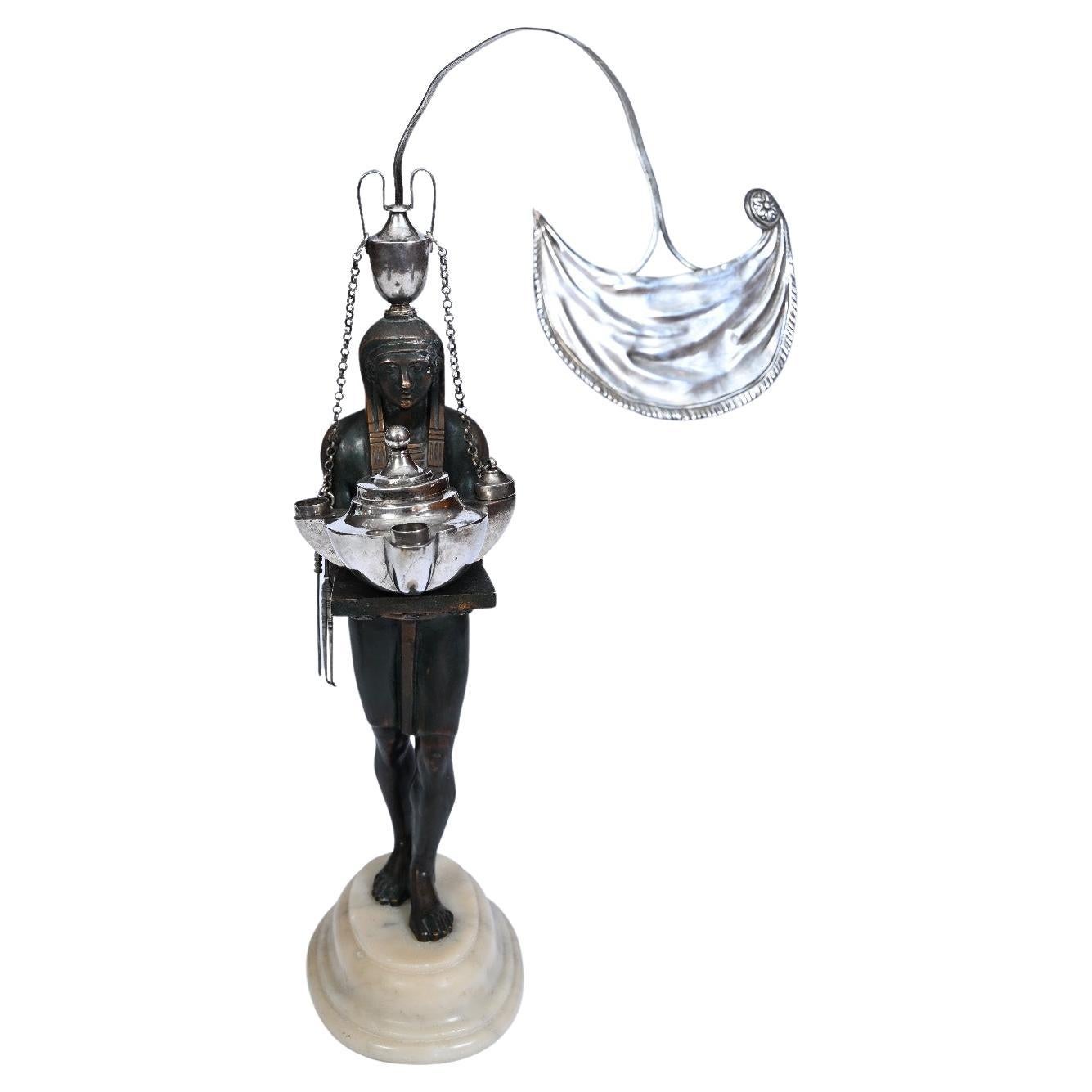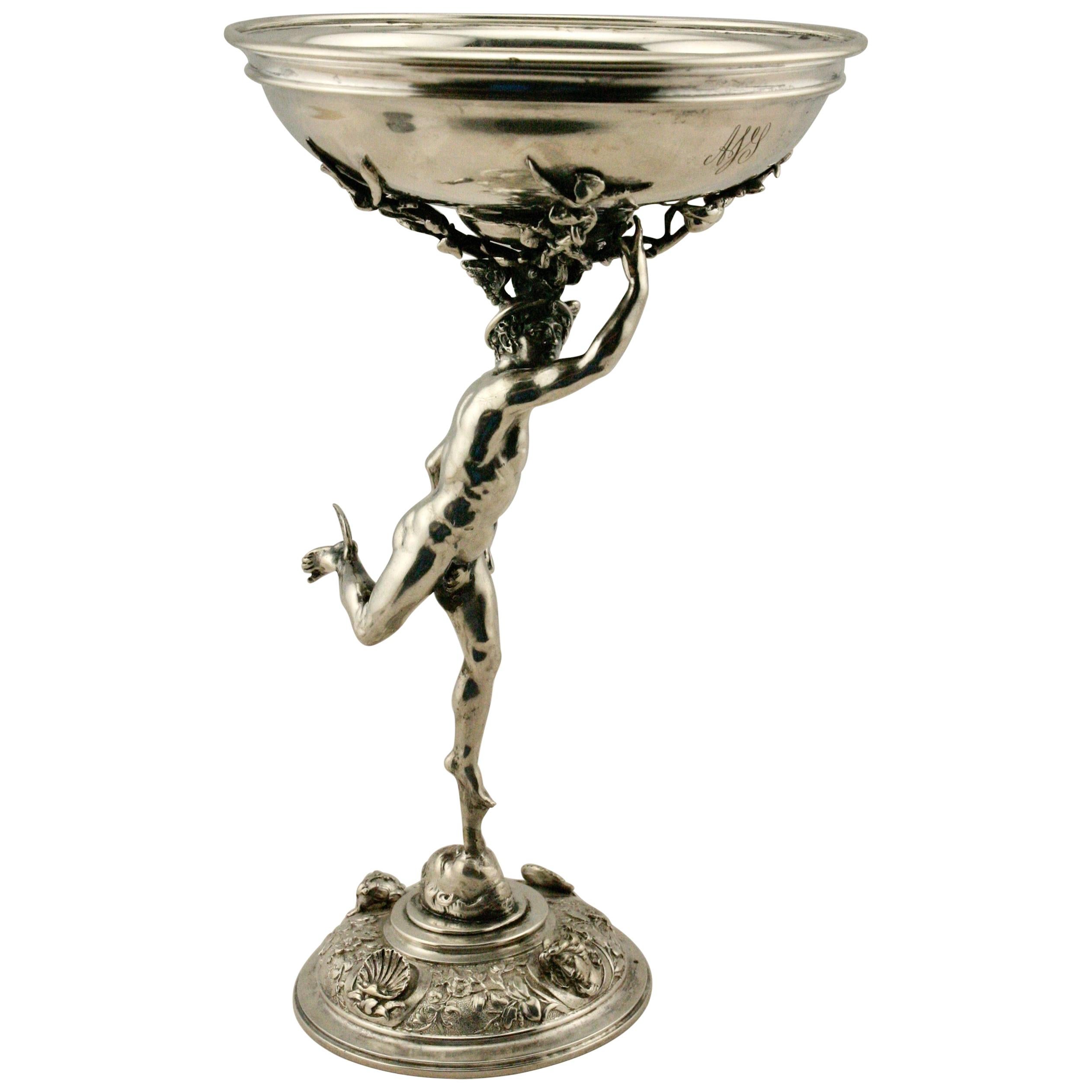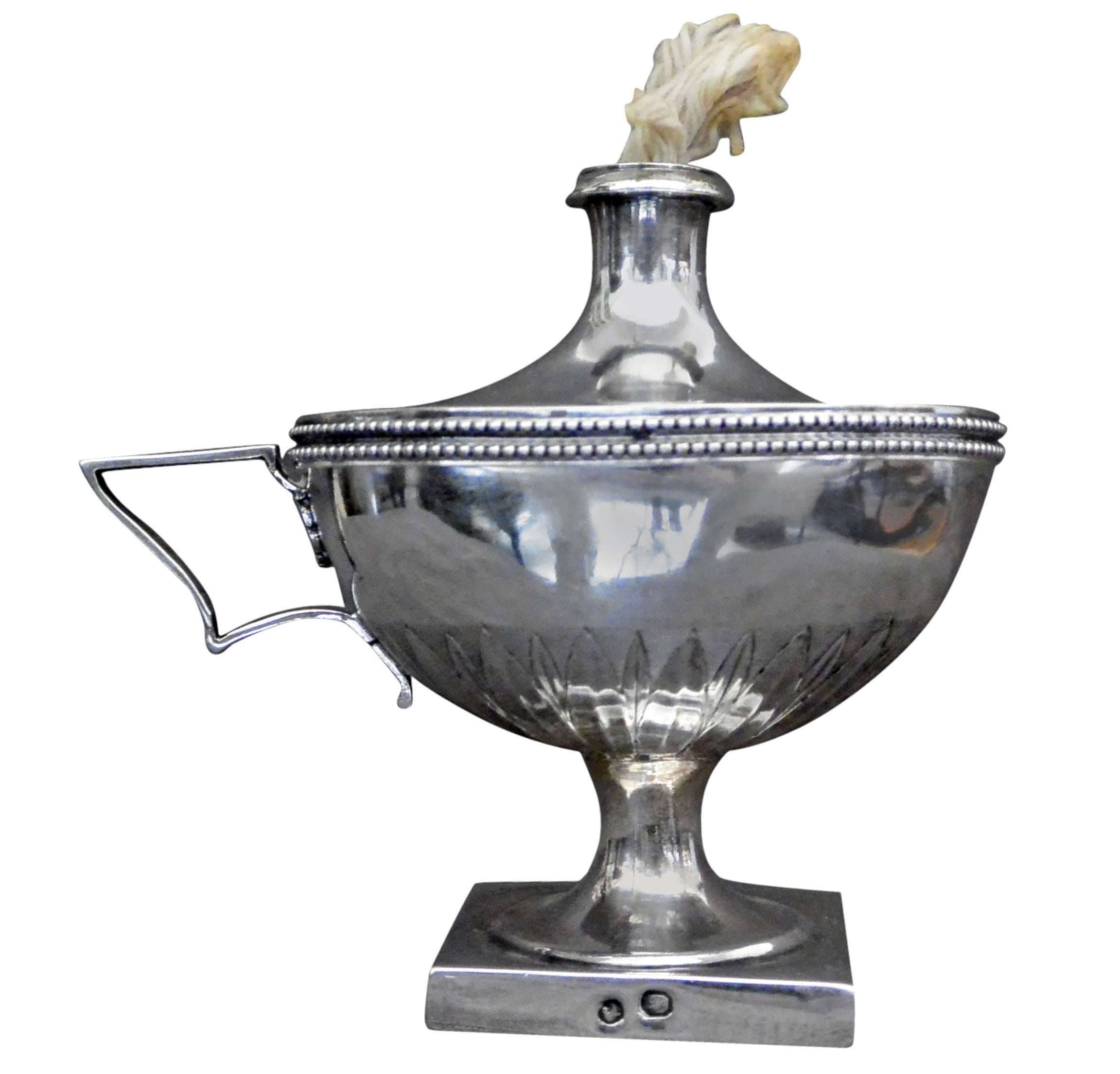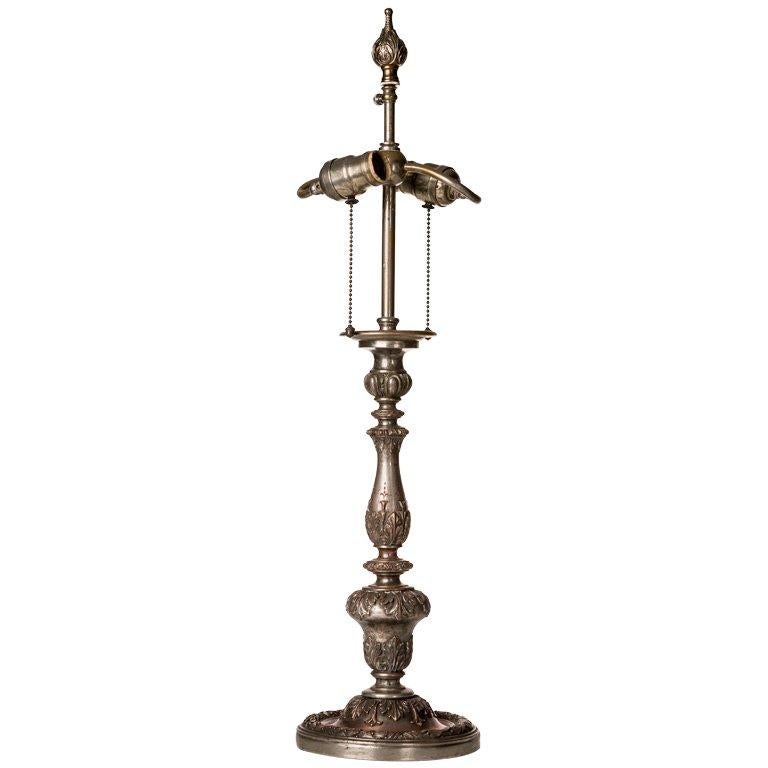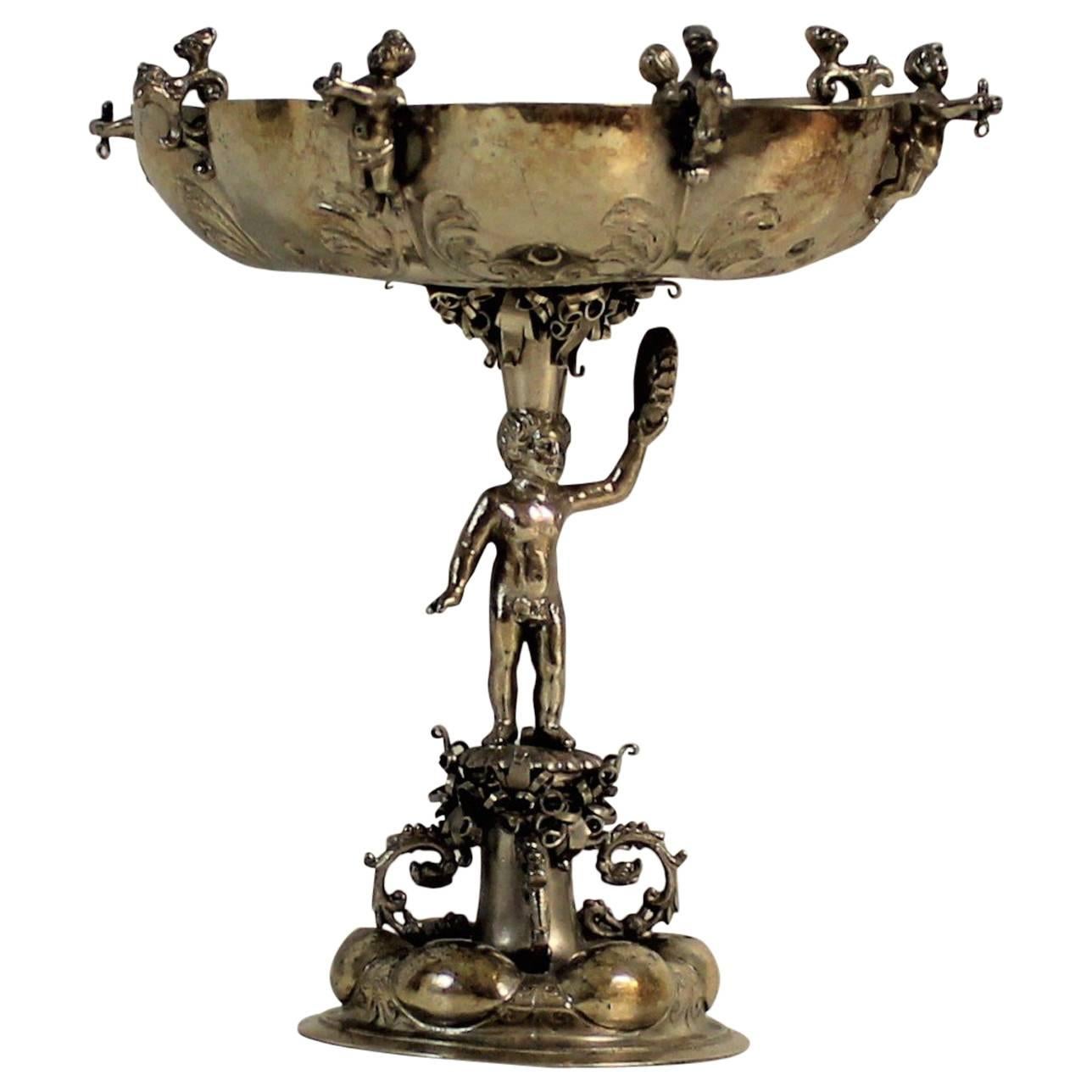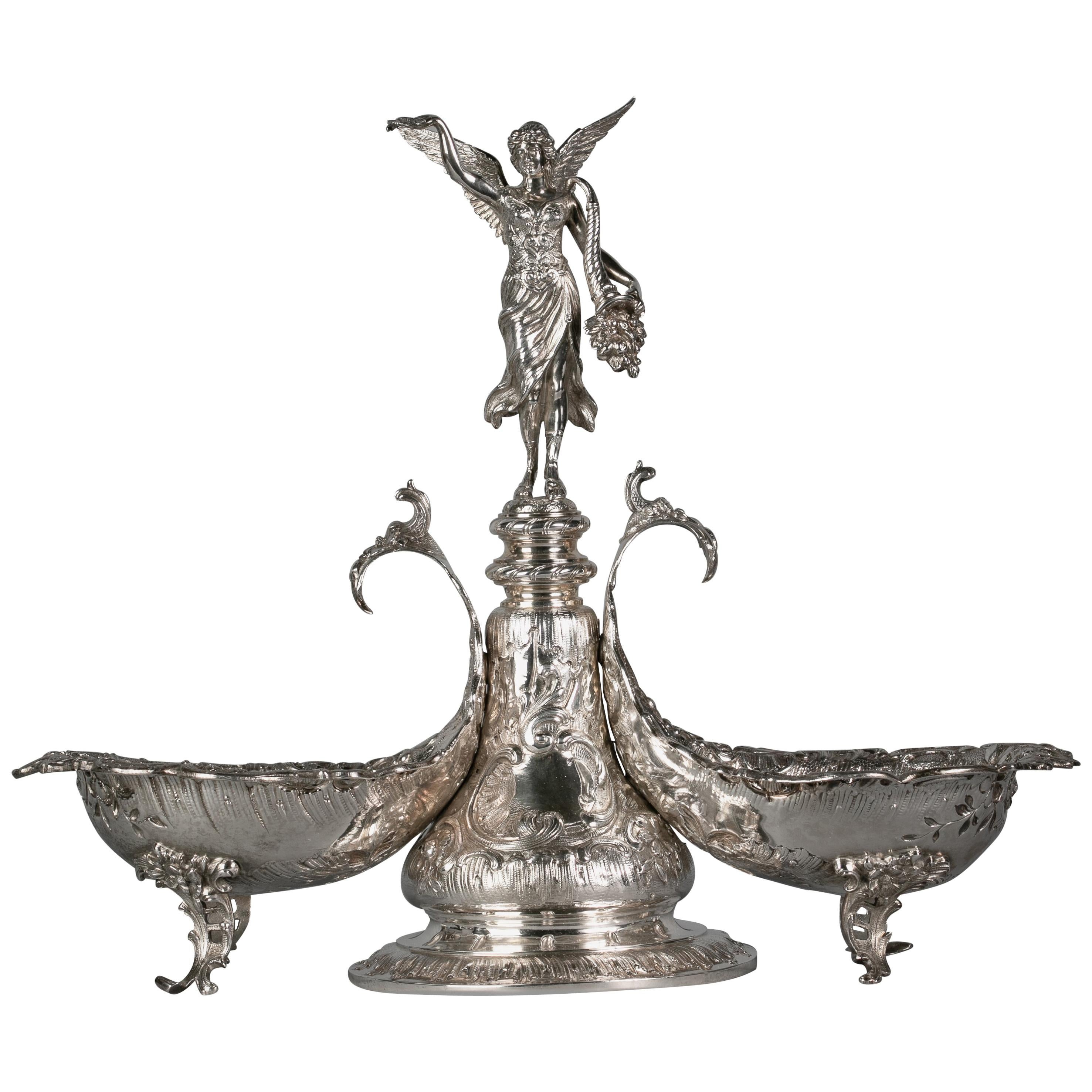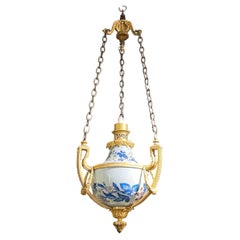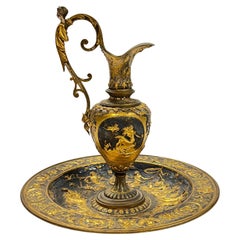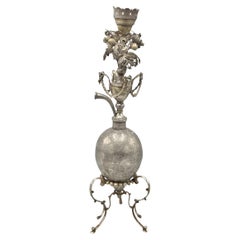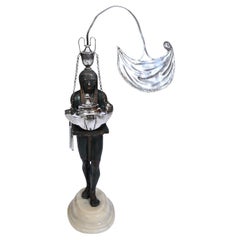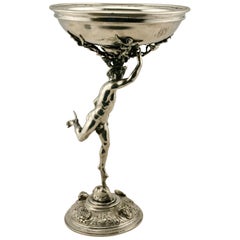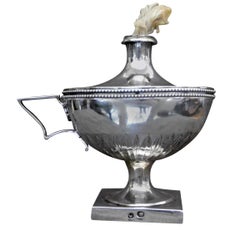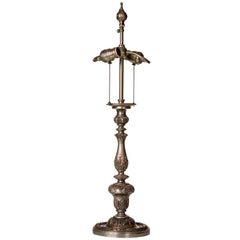Items Similar to 19th Century Italian Silver Oil Lamp Depicting Mercury After Giambologna
Want more images or videos?
Request additional images or videos from the seller
1 of 10
19th Century Italian Silver Oil Lamp Depicting Mercury After Giambologna
$8,500
£6,409.84
€7,413.29
CA$11,925.45
A$13,255.88
CHF 6,948.45
MX$161,886.41
NOK 86,747.39
SEK 81,613.11
DKK 55,330.66
About the Item
Rare and exceptional 19th century silver oil lamp supported by the figure of Mercury after the model by Giambologna, by the Italian silversmith, Angelo Giannotti (1824-1865) of Bologna, circa 1850s. With the Papal State mark and mark of the maker which reads A99G. 33 by 14 by 8 in (86 by 24 by 20 cm).
- Dimensions:Height: 33 in (83.82 cm)Width: 8 in (20.32 cm)Depth: 14 in (35.56 cm)
- Style:Neoclassical (Of the Period)
- Materials and Techniques:
- Place of Origin:
- Period:
- Date of Manufacture:1880s
- Condition:Wear consistent with age and use. Minor losses. No apparent signs of restoration. The marble base has a few chips around the upper and lower parts.
- Seller Location:New York, NY
- Reference Number:1stDibs: LU881936835592
About the Seller
5.0
Vetted Professional Seller
Every seller passes strict standards for authenticity and reliability
Established in 1890
1stDibs seller since 2009
262 sales on 1stDibs
Typical response time: 4 hours
- ShippingRetrieving quote...Shipping from: New York, NY
- Return Policy
Authenticity Guarantee
In the unlikely event there’s an issue with an item’s authenticity, contact us within 1 year for a full refund. DetailsMoney-Back Guarantee
If your item is not as described, is damaged in transit, or does not arrive, contact us within 7 days for a full refund. Details24-Hour Cancellation
You have a 24-hour grace period in which to reconsider your purchase, with no questions asked.Vetted Professional Sellers
Our world-class sellers must adhere to strict standards for service and quality, maintaining the integrity of our listings.Price-Match Guarantee
If you find that a seller listed the same item for a lower price elsewhere, we’ll match it.Trusted Global Delivery
Our best-in-class carrier network provides specialized shipping options worldwide, including custom delivery.More From This Seller
View All19th Century French Bronze and Pottery Hanging Oil Lamp by Gagneau
By Gagneau Paris
Located in New York, NY
Unique 19th century hanging oil lamp by Gagneau and Company of Paris, with urn form crafted from faience with blue, red and pink flowers and leaves on a cream colored ground, with ne...
Category
Antique Late 19th Century French Chandeliers and Pendants
Materials
Bronze
19th Century French Neoclassical Ewer and Basin in Louis XIII Style
Located in New York, NY
Antique (19th century) French bronze basin and ewer in the 16th century Louis XIII style with beautiful Roman neoclassical repousse designs depicting Venus and the triumph of Neptune...
Category
Antique 1880s French Neoclassical Revival Decorative Bowls
Materials
Brass
19th Century Ottoman / Turkish Silver Huqqa / Hookah
Located in New York, NY
Antique (19th century) huqqa (hookah) finely crafted from silver, of ovoid form resting on three-legged stand with floral designs around the neck and embossed designs throughout. 20...
Category
Antique Late 19th Century Turkish Tobacco Accessories
Materials
Silver
Fine 19th Century French Neoclassical Figurative Bronze Torchiere Floor Lamp
Located in New York, NY
Finest Quality 19 century French Monumental torchiere finely sculpted and cast bronze floor candelabra with dark brown patina, depicting neocla...
Category
Antique 1880s Floor Lamps
Materials
Siena Marble, Bronze
French 19th Century Bronze Electroform Ewer and Basin on Stand
Located in New York, NY
Antique (19th century) French gilt bronze and electroplate ewer and basin on tripod stand in the Roman neoclassical style, exceptionally cast after the original model by the 16th ce...
Category
Antique 19th Century French Neoclassical Side Tables
Materials
Bronze
Very fine Art Deco Italian Alabaster Carved Figurative Lamp by Gaspar Mascagni
Located in New York, NY
Delightful hand-carved alabaster lamp depicting young boy and girl, signed G Mascagni, attributed to the Italian master, Gaspar Mascagni, active in the late...
Category
Antique Early 19th Century Italian Art Deco Table Lamps
Materials
Alabaster
You May Also Like
An Italian Bronze and Silver Oil Lamp, Rome circa 1800
Located in New York, NY
A rare and theatrically conceived Italian bronze and silver oil lamp, crafted in Rome circa 1800, this exceptional piece is far from a typical utilitarian object—it is a sculptural t...
Category
Antique 19th Century Italian Sterling Silver
Materials
Marble, Silver, Bronze
Italian Silver Figural Compote of Mercury by G. Accarisi, Florence
Located in Sarasota, FL
Italian silver compote late 19th century, with mark of G. Accarisi of Firenze/Florence. The compote is in the form of a shallow bowl held aloft by a model of Mercury based on the scu...
Category
Antique Late 19th Century Italian Renaissance Revival Vases
Materials
Silver
French Neoclassical Silver Oil Lamp
Located in New York, NY
French Neoclassical Silver Oil Lamp. Antique French sterling silver oil lamp of neoclassical form with leaf and bead detailing on raised pedes...
Category
Antique Early 19th Century French Neoclassical Sterling Silver
Materials
Sterling Silver
Silver Plate Neoclassical Table Lamp Attributed to E. F. Caldwell, Circa 1910s
By Edward F. Caldwell & Co.
Located in New York, NY
ATL1848
A neoclassical style foliate detailed table lamp in its original age-worn silverplate over copper finish, attributed to the New York maker E. F. Caldwell Co.
Dimensions:
Ov...
Category
Early 20th Century American Neoclassical Table Lamps
Materials
Silver Plate, Brass, Copper
Continental Silver Figural Compote
Located in Hamilton, Ontario
Continental silver figural compote.
Category
Antique 19th Century European Sterling Silver
Large German Silver Figural Centerpiece, circa 1880
Located in New York, NY
With two large coupes on scroll legs. Surmounted by a winged victory holding a laurel wreath and a cornucopia.
Category
Antique 1880s German Centerpieces
Materials
Silver
More Ways To Browse
Italian Antique Oil Lamp
Sterling Oil Lamp
Giambologna Mercury
Tiffany Sterling Tea Set
Wallace Antique Silver
Colonial Indian Silver
E J Caldwell
Menu Holders
Sterling Tea Cup
Antique Postal Furniture
Claret Jugs
Hester Bateman Antique Silver
Scallop Spoon
St Mark Lion
Sterling Covered Dish
Sterling Ewer
Sterling Flatware Service For Six
Sterling Silver Covered Dish
